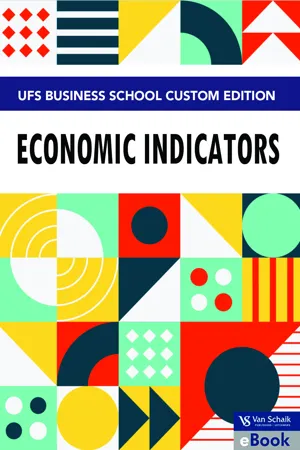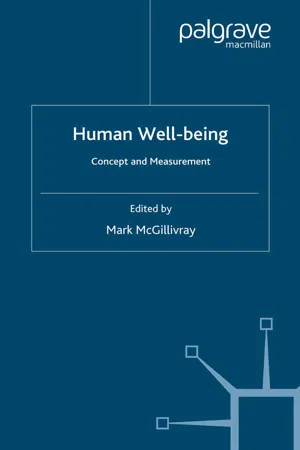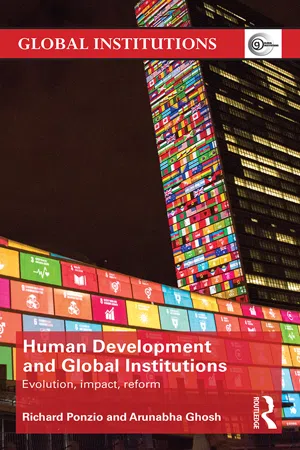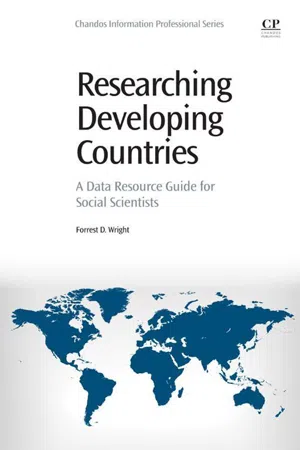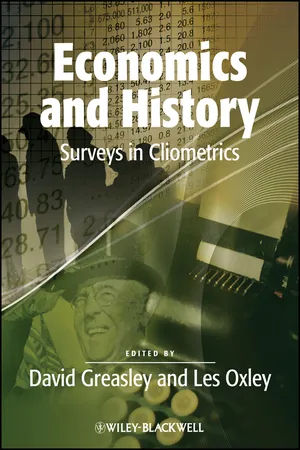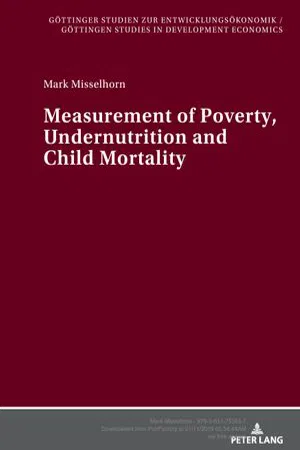Geography
Indicators of Human Development
Indicators of human development are measures used to assess the well-being and quality of life of a population. These indicators include factors such as life expectancy, education levels, income, and access to basic amenities. They are used to compare the development levels of different countries and to track progress over time.
Written by Perlego with AI-assistance
Related key terms
1 of 5
12 Key excerpts on "Indicators of Human Development"
- Guy Fletcher(Author)
- 2015(Publication Date)
- Routledge(Publisher)
Campbell 1976 : 118). (Note that these “objective indicators” bear little resemblance to Kahneman’s measures of “objective happiness.”)Quite arguably, the most famous outgrowth of the social indicator movement is the Human Development Index (HDI) of the United Nations Development Programme (UNDP). The HDI has appeared annually in the Human Development Report since 1990. Noting that “income is not the sum total of human life” (UNDP 1990 : 9), the HDI is based on “three essential elements of human life—longevity, knowledge, and decent living standards” (UNDP 1990 : 12). The UNDP explains that life expectancy matters because “a long life is valuable in itself” and because it is associated with important achievements such as adequate nutrition, and that literacy matters because it reflects access to education; the importance of decent living standards is treated as self-explanatory (UNDP 1990 : 11–12). The summary HDI is the geometric mean of three normalized indices: one for life expectancy at birth, one for mean and expected years of schooling, and one for gross national income (GNI) per capita (UNDP 2014 : Technical note 1).In both conceptualization and execution, the Human Development Report reflects the influence of the capability approach associated with Amartya Sen (e.g., 1985) and Martha C. Nussbaum (e.g., 2000). The capability approach represents a shift away from what people succeed in attaining—whether evaluated in terms of happiness, preference satisfaction, or something altogether different—and toward the freedom they have in leading their lives (Sen 2008 : 23). In this approach, the focus is on capability: the set of alternative functionings that a person can attain, where functionings are things that a person manages to do or to be in leading her life (Sen 2008 : 24). Efforts to measure capabilities typically start with some list of central human capabilities and proceed to operationalize each element of the list. Thus, Paul Anand and co-authors (2009) take as their starting point the list provided by Martha Nussbaum (2000 : 78–80): life; bodily health; bodily integrity; senses, imagination, and thought; emotions; practical reasoning; affiliation; other species; play; and control over one’s environment. The authors then propose that life can be assessed by the question “Given your family history, dietary habits, lifestyle and health status until what age do you expect to live?,” bodily health by the question “Does your health in any way limit your daily activities compared with most people of your age?,” and so on (Anand et al. 2009- Chandrika Kaul, Valerie Tomaselli-Moschovitis, Chandrika Kaul, Valerie Tomaselli-Moschovitis(Authors)
- 1999(Publication Date)
- Greenwood(Publisher)
A. Key Indicators GENERAL OVERVIEW A collection of key indicators—involving land area, population, economic output, health, and education— sets the stage for this statistical investigation of poverty by outlining basic aspects of each country's material, geographic, demographic, and social features and pros- pects. Figures summarizing the indicator according to total world performance and income-level categories lead off the presentation for each type of indicator. Tables follow, which list all countries in alphabetical order for ease of research. These comprehensive alphabetical lists are followed by another set of tables organized by conti- nent so that a more comparative analysis can be con- ducted if needed. All countries of the world are presented in the tables and figures in Section A. This is done to provide a world- wide backdrop to the data given on poverty in later chap- ters, when indicators specifically representing the causes, effects, features, and policy aspects of poverty in less developed countries become the focus. EXPLANATION OF INDICATORS The indicators used in this chapter help to outline the material and human capacity of a country to provide for its people. The most basic indicators—land area, popu- lation, and gross national product—present data on the three arenas of greatest concern in analyzing the mate- rial health of a society Land Area: Land area is a crude but crucial indica- tor. It represents the land mass available within the po- litical boundaries of a country, and therefore indicates potential capacity for production of physical resources to satisfy human needs. However, such raw data obvi- ously offers an incomplete picture. Answers to questions such as how much of that land is arable and what spe- cific material resources (minerals, forests, etc.) the land hosts offer further details about the satisfaction of hu- man needs, or lack thereof (A 1.1-A 1.6).- eBook - ePub
- P Mohr, D Yu, S Adendorff(Authors)
- 2020(Publication Date)
- Van Schaik Publishers(Publisher)
Table 11-3 than with any other group and consistently weaker than those of the other middle-income countries included in the table.11.4 HUMAN DEVELOPMENT INDEX
In 1990 the United Nations Development Programme (UNDP) published its first annual Human Development Report. To obtain a quantitative indication of the level of human development in member countries, these countries were ranked according to a human development index (HDI). The HDI can be regarded as a measure 212 of people’s ability to live a long and healthy life, to communicate, to participate in the community and to have sufficient means to be able to afford a decent living. The index originally had three basic components: longevity (a long and healthy life), knowledge , and income (a decent standard of living).TABLE 11-3 Some social indicators in selected countries, 2016Category/Country Life expectancy at birth (years) Crude birth rate Crude death rate Under-5 mortality rate (per 1000 live births) Total fertility rate Low-income Tanzania 66 38 7 57 5,0 Uganda 60 42 9 53 5,6 Zimbabwe 61 33 8 56 3,8 Lower-middle-income India 69 19 7 43 2,3 Indonesia 69 19 7 26 2,4 Sri Lanka 75 15 9 9 2,0 Upper-middle-income Brazil 76 14 6 15 1,7 China 76 12 7 10 1,6 Malaysia 75 17 5 8 2,0 South Africa 63 21 10 43 2,5 High-income Australia 83 13 7 4 1,8 Japan 84 8 11 3 1,4 United States 79 12 8 7 1,8 Source: World Bank, World Development Indicators, 2018.The only indicator of longevity used was life expectancy at birth . Knowledge was measured by two educational variables: adult literacy (ie the proportion of persons 15 years and older who can read and write) and the combined primary, secondary and tertiary gross enrolment ratio . The measure of knowledge (the education index) was then obtained by assigning a weight of two-thirds to literacy and one-third to the combined gross enrolment. Income (or standard of living) was measured by using GDP per capita converted to purchasing power parity US dollars (PPP$) (see Section 7.5 ). The conversion, based on the results of the United Nations International Comparison Project (ICP), was an attempt to solve the currency problem encountered in international comparisons of value data (see Chapter 12 - eBook - PDF
- M. McGillivray(Author)
- 2006(Publication Date)
- Palgrave Macmillan(Publisher)
10 A Framework for Incorporating Environmental Indicators in the Measurement of Human Well-Being Osman Zaim Introduction The last decade has witnessed major improvements in the measurement of sustainable human development. Considerable time and research effort have been devoted to both extending the dimensions of the measurement and the methodology used to compute sustainable human development indices. Now, the measurement of human well-being is not only limited to economic indicators but also takes into account social, institutional and ecological background, thus utilizing over 130 indicators approved by the United Nations in April 1995 (UN 2001). Improvements in the data collection of indicators, while triggering the construction of indexes from a series of constituent indicators such as human development index (HDI) with com- ponent indicators on longevity, educational attainment and income, have also led to aggregation of indexes of different dimensions. As a typical example of the latter, one can cite Prescott-Allen's (2001) human well-being index (HWI), which is an equal weighted average of the human well-being index and ecosystem well-being index (EWI), integrating two indices with social-economical and environmental dimensions. On the academic front, research during recent years has considerably improved our understanding of sustainable human development, but at the expense of generating a certain amount of controversy. The concerns range from not being able to construct a totally objective index of sustain- able human development (because both the indicator selection and weights assigned to these reflect normative judgements of those who developed the index), to whether these indices satisfy the certain axiomatic properties required of any index (Sen 1976; Zheng 1993). - eBook - PDF
Human Well-Being
Concept and Measurement
- M. McGillivray(Author)
- 2006(Publication Date)
- Palgrave Macmillan(Publisher)
4 Social and Political Indicators of Human Well-being Susan Harkness Introduction Quality of life bears a complex relationship to a wide range of social and polit- ical indicators of development. Over recent years, the availability of data has increased appreciably in both the range and number of countries covered. In this chapter, I ask what contribution these indicators can make towards our understanding of human well-being. In so doing, the conceptualization of ‘well-being’ and development is discussed, and how these concepts may be applied to multidimensional approaches to welfare analysis. The issues surrounding the choice of indicator variables, data quality and availability are reviewed, before the interpretation of social indicators is discussed. I then look at issues surrounding aggregating and disaggregating social indicators, and review the literature on political indicators of well-being. Conceptualizing human well-being and development Since the 1990s, the United Nations Development Programme’s Human Development Reports (hereafter UNDP and HDR) have argued that ‘human development’, and not economic growth, should be the objective of devel- opment policy. Indeed, it is now widely accepted that measures of income and poverty do not adequately measure human well-being. Instead income has increasingly become seen as a means towards achieving an end, rather than as an end in itself, and this has led to a substantial shift in emphasis in poverty analysis (see Dowrick, Chapter 3 this volume, for a further discus- sion of the limitations of using income as a measure of well-being). Instru- mental to this shift have been the ‘basic needs’ approach, developed in the 1970s (Seers 1972, ILO 1976), and Sen’s (1993a) ‘capabilities’ approach. The basic needs approach placed emphasis on the fact that the poor require access to certain basic goods and services, and that income may not be a necessary or sufficient condition for their provision. For Sen, on the other 88 - eBook - ePub
Human Development and Global Institutions
Evolution, Impact, Reform
- Richard Ponzio, Arunabha Ghosh(Authors)
- 2016(Publication Date)
- Routledge(Publisher)
30The HDI and other human development indices also have been employed for analyzing development gaps in the nearly one-third of countries and territories classified by the World Bank and OECD as “fragile and conflict-affected,”31which overlap more or less with what the economist Paul Collier labels the “bottom billion” of the world’s poor, who inhabit these polities.32The Kosovo Human Development Report 2004, for instance, informed policy-making by the then-Provisional Institutions of Self-Government and large UN Mission in Kosovo (UNMIK) by exhibiting the disparities in HDI levels between municipalities across the territory of Kosovo and recommending a variety of policy responses. Besides gaps between states, disaggregated human development data at different levels of governance within a state and between specific groups in a society have equipped decision-makers with the ability to identify and respond to development gaps before they become strikingly large and potentially destabilizing (see the next two points below).Analysis and policy-making
Third, human development composite measures are employed for analysis and policy-making at various levels of governance. The HDI is famous for comparing across nations the aggregate measure of a country’s progress within the three pillars of life expectancy, literacy, and school enrollment (the knowledge and education pillar), and income per capita (the standard of living pillar). Meanwhile the HDI and other human development composite measures also have aided international policy-makers, development practitioners, and scholars in assessing the estimated aggregate progress of the world, specific regions, and within sub-national units. This includes the application of innovative measurement methodologies to the comparison of neighborhoods within large municipalities in the Global North and South, including New York City and Rio de Janeiro. Urban-rural differentiation within countries has also aided decision-makers in understanding better the extent to which and why certain parts of a country or sub-region are being left behind despite human development progress within a national or sub-national political unit. - eBook - ePub
Researching Developing Countries
A Data Resource Guide for Social Scientists
- Forrest Daniel Wright(Author)
- 2015(Publication Date)
- Chandos Publishing(Publisher)
http://hdr.undp.org/en/content/designing-inequality-adjusted-human-development-index-ihdi ). The IHDI table then contains each country’s original HDI score, its newly calculated IHDI score, and how much inequality has impacted its score as a percentage of “loss” from the original HDI score. Additionally, the IHDI table contains “Coefficient of Human Inequality” figures, which represent the average inequality of health, education, and income of a country, as estimated by averaging the dimensions of inequality. Users can view IHDI data as a map, or by a range of charts under “visualize.” Additionally, the data can be downloaded in a range of file formats, including CSV, JSON, XML, RDF, or RSS among others.World Bank
World Development Indicators: People
http://wdi.worldbank.org/tables Topics Covered: Millennium Development Goals; population; education; health; reproductive health; employment; mortality; unemployment; social protection; gender; demographics; poverty; incomeDescription
The World Bank’s World Development Indicators (WDI) project transforms economic and human development data from 214 countries into comparable cross-country indicators. The WDI is highly influential in development circles, and the World Bank’s release of its annual WDI report often catches the eyes of policy makers and journalists. The annual WDI report is released in April of each year, while the online database is updated three times a year. The WDI is divided into six segments: World View, People, Environment, Economy, States and Markets, and Global Links. Below I will discuss the “People” section.Scope and Methodology
As part of its annual WDI project, the World Bank provides human development indicators for over 200 countries within the “People” section. Specifically, this series of indicators covers the topics of education, health, jobs, social protection, and gender; as well as population, poverty, and prosperity. Many of these indicators are used in measuring the UN’s MDG. Depending on the indicator, the WDI may provide disaggregated socioeconomic and gender variables, such as age, gender, and wealth status. Most indicators range in coverage from approximately 2000 to 2013 or present, though some vary depending on the scope of the indicator and the data availability. The WDI’s most recent release for 2015 includes a new indicator: Shared Prosperity. This indicator measures the income of a country’s bottom 40% of wealth population, and calculates its annualized growth rate from a previous baseline year per capita. - eBook - ePub
Economics and History
Surveys in Cliometrics
- David Greasley, Les Oxley, David Greasley, Les Oxley(Authors)
- 2011(Publication Date)
- Wiley-Blackwell(Publisher)
per capita GDP (its logarithm) is a surrogate (UNDP, 2001, p. 240). These achievements provide individuals the freedom to choose (Kakwani, 1993; Fleurbaey, 2009) and, thus, the opportunity ‘to lead lives they have reasons to value’ (Sen, 1997).Indices for each dimension (I ) are computed according to the following formula,(1)where x is the observed value of a given dimension of welfare, and Mo and M represent the maximum and minimum values, or goalposts. Goalposts representing levels not reached yet and below the present’s lowest level, respectively, were chosen for each indicator in order to make possible comparisons over time.4 Each dimension ranges, thus, between 0 and 1. The UNHDI is obtained as the unweighted arithmetic average of the three dimension indices.Reactions to non-conventional indicators of well-being have always been critical. One of the most popular synthetic indices, Morris’s (1979) physical quality of life index (PIQL; an unweighted average of normalized indices of infant mortality, life expectancy and literacy) was seriously questioned on the basis of the high collinearity between its first two components (Hopkins, 1991) and has only made an uncritical comeback in the historical literature (Federico and Toniolo, 1991; Domínguez and Guijarro, 2000).5The UNHDI, presumably an improvement on Morris’s PIQL, has been seriously questioned (Dasgupta, 1993, p. 77).6 Srinivassan (1994, p. 240), for example, described the new index as ‘conceptually weak and empirically unsound, involving serious problems of non-comparability over time and space’, whereas Dowrick et al . (2003) stressed its lack of welfare economics foundations. Moreover, the distribution of each dimension of the index is not taken into account.7 Furthermore, the weakness of the data underlying UNHDI (incomplete coverage, measurement errors and biases) has been highlighted as a major shortcoming of the new index (Srinivassan, 1994).8 GDP per head estimates for developing countries are highly questionable (Heston, 1994). Moreover, literacy and enrolment data are frequently non-homogeneous making comparisons difficult.9 Lastly life expectancy data tend to be interpolated and often obtained through life tables’ projection rather than through direct estimation.10 - eBook - ePub
Globalization and Inequalities
Complexity and Contested Modernities
- Sylvia Walby, Author(Authors)
- 2009(Publication Date)
- SAGE Publications Ltd(Publisher)
There are sets of indicators of progress that are intended to have global relevance. The point of departure for most of these is economic development and growth. This has been the premier goal for many national and international governmental bodies such as the International Monetary Fund and World Bank, and for many this is still the case. However, there have been several attempts to move beyond this rather narrow concept of economic development towards the broader concept of human development. These moves have taken place in particular on a global level in UN bodies, such as can be found in the United Nations Development Project, though there are in addition some significant developments in the EU. An alternative approach is one based on human rights which is focused on civil liberties, excessive violence, and suffrage-democracy, rather than on the economic domain.From its first Human Development report in 1990 and every year since, the UNDP has sought to broaden the goal of development from a narrow economic focus to a broader human development. The annual report presented by the United Nations Development Project constitutes an alternative assessment of global economic progress to that of the global financial institutions, drawing on the intellectual work of Amartya Sen. Its first indicator – the Human Development Indicator – combined income per person with longevity and education (literacy as well as educational enrolment). In 1995, this was gendered in the Gender-related Development Index, with the female share of earned income, gendered longevity, and gendered education, and the Gender Empowerment Measure, with the proportionate female presence in top jobs (managers and professionals) and parliamentary seats (UNDP 1995). One disadvantage of the GDI is that it conflates the absolute level of development with a gender relationship in a single index (Dijkstra 2002; Dijkstra and Hanmer 2002). Second, for technical reasons, differences in the level of countries’ GDI is overwhelmingly driven by one component – income share – which is itself predominantly driven by the employment rate (Bardhan and Klasen 1999). It is preferable to analyse the components of the indices separately, as is done here. Recent reports include key statistics on a range of aspects of the human condition, including environmental sustainability. They are predominantly outcome indicators: just a few are policy focused, such as governmental expenditures on education and the military. The UNDP indicator analysis is supported by a global social science epistemic community around development, which provides analytic expertise and policy support. This is fed by the more radical social movements that are pro global justice and anti-capitalist, especially when they have taken the form of global waves, challenging if not overcoming the distinction between the field of ‘development’ and that of ‘globalization’. - Mark Misselhorn(Author)
- 2018(Publication Date)
- Peter Lang International Academic Publishers(Publisher)
The HDI is today widely used in academia, the media and in policy circles to measure and compare progress in human development between countries and over time. Despite its popularity, which is among other things due to its transparency and simplicity, the HDI is criticized for several reasons. 1 First, it neglects several other dimensions of human well-being, such as for example human rights, security and political participation (see e.g. Anand and Sen (l 992), Ranis, Stewart and Samman (2006)). Second, it implies substitution possibilities between the three dimension indices, e.g. a decline in life expectancy can be off set by a rise in GDP per capita. 2 Related to that critique is the third point, which charges that the HDI uses an arbitrary weighting scheme (see e.g. Kelley (l 99 l ), Srinivasan (1994) and Ravallion (1997)). For instance, why should education be worth as much as income or health? Finally and fourth, the HDI is often criticized because it only looks at average achievements and, thus, does not take into account the distribution of human development within a country (see e.g. Sagar and Najam (l 998)). When constructing distribution-sensitive measures of human development, lim-ited data availability on the distribution of human development achievements seri-ously constrains the analysis. Household income surveys are today widely under-taken and, hence provide data on income distribution, but it is much more difficult to get data on inequality in life-expectancy, educational achievements and literacy. Inequality in these dimensions seems, at least in developing countries, also to be very high. There is also broad empirical evidence that mortality as well as educa-tional attainment vary with income and wealth in both rich and poor countries (see e.g. Cutler, Deaton and Lleras-Muney (2006) and Filmer and Pritchett (l 999)). In the past several attempts have been made to integrate inequality into the human development index.- eBook - PDF
Development Economics
Theory and Practice
- Alain de Janvry, Elisabeth Sadoulet(Authors)
- 2021(Publication Date)
- Routledge(Publisher)
CHAPTER ONE What Is Development? Indicators and Issues S EVEN D IMENSIONS OF D EVELOPMENT Development is about the enhancement of human wellbeing. Because wellbeing is a highly multidimensional concept, defining development requires making a statement about the social needs and aspirations of the corresponding individual, group, class, or nation. Few would disagree with the generic statement that “development” is preferable to “underdevelopment.” At the same time, there is considerable disagreement across individuals and nations as to what is meant by development and, once agreed on what it is, how it is to be achieved. Development is one thing for some and another for others. Some put achieving a rapid rate of economic growth as the main objective. This characterizes countries like postwar Japan and China, which pursued neo-mercantilist models with low-priced exports driving economic growth. In their debate on how to reduce poverty in India, Bhagwati and Panagariya (2013) argue that the main instrument is more rapid economic growth facilitated by further trade liberalization and an improved investment climate, notably in terms of labor laws and landownership. Others give a great deal of importance to maintaining low inequality. This is the case in the Nordic countries and Japan in the more recent period, heavily taxing high incomes to level out social inequalities through transfers. The World Bank’s (2005) World Development Report 2006 made the case that lowering inequality is a factor of not only reduced poverty but also, in the long run, accelerated economic growth. Others place a great deal of importance on securing access to basic needs for all, with comprehensive coverage of publicly provided health, education, and pension services. This perspective on the role of the state in delivering a universal minimum basic-needs coverage applies to much of continental Europe and Canada. - eBook - PDF
Human Development Report 2007/2008
Fighting climate change: Human solidarity in a divided world
- United Nations Development Programme(Author)
- 2015(Publication Date)
- Palgrave Macmillan(Publisher)
1994. “Human Development Index: Methodology and Measurement”. Occasional Paper 12, United Nations Development Programme, Human Development Report Office, New York. (HDI) ——, 1995, “Gender Inequality in Human Development Theories and Measurement.” Occasional Paper 19, United Nations Development Programme, Human Development Report Office, New York. (GDI, GEM) ——, 1997, “Concepts of Human Development and Poverty: A Multi-dimensional Perspective.” In United Nations Development Programme, Human Development Report 1997 Papers : Poverty and Human Development New York. (HPI-1, HPI-2) Bardhan, Kalpana, and Stephan Klasen, 1999. “UNDP’s Gender-Related Indices. A Critical Review.” World Development 27 (6): 985–1010 (GDI, GEM) United Nations Development Programme, 1995. Human Development Report 1995. New York: Oxford University Press, Technical notes 1 and 2 and chapter 3. (GDI, GEM) ——, 1997, Human Development Report 1997. New York: Oxford University Press. Technical note 1 and chapter 1. (HPI-1, HPI-2) ——, 1999, Human Development Report 1999. New York: Oxford University Press. Technical note (HDI, GDI) Klasen, Stephan. 2006. "UNDP's Gender-related Measures: Some Conceptual Problems and Possible Solutions." Journal of Human Development Alternative Economics in Action, 7 (2): 243 - 274. 362 HUMAN DEVELOPMENT REPORT 2007/2008 Human development is about expanding free- doms and capabilities. Yet, as explained in chap- ter 2, this process can be derailed by climate-re- lated disasters. Besides their immediate costs in terms of lives lost and livelihoods disrupted, cli- mate-related shocks carry substantial intrinsic costs that are likely to follow people throughout their lives, locking them into low human devel- opment traps. Climate change promises to raise these stakes for billions of vulnerable people.
Index pages curate the most relevant extracts from our library of academic textbooks. They’ve been created using an in-house natural language model (NLM), each adding context and meaning to key research topics.


